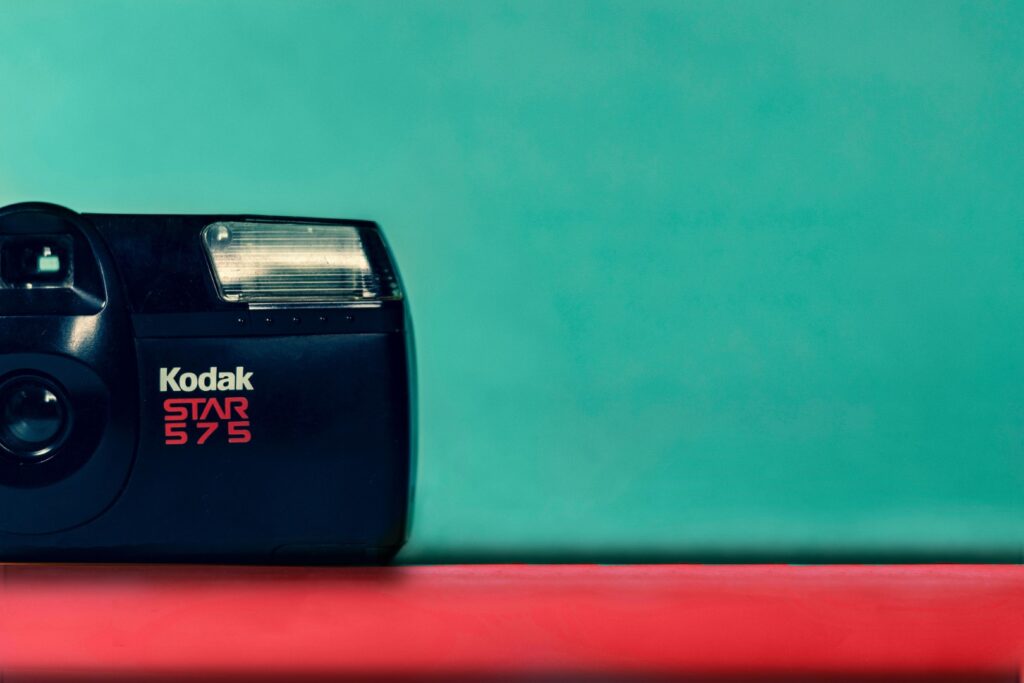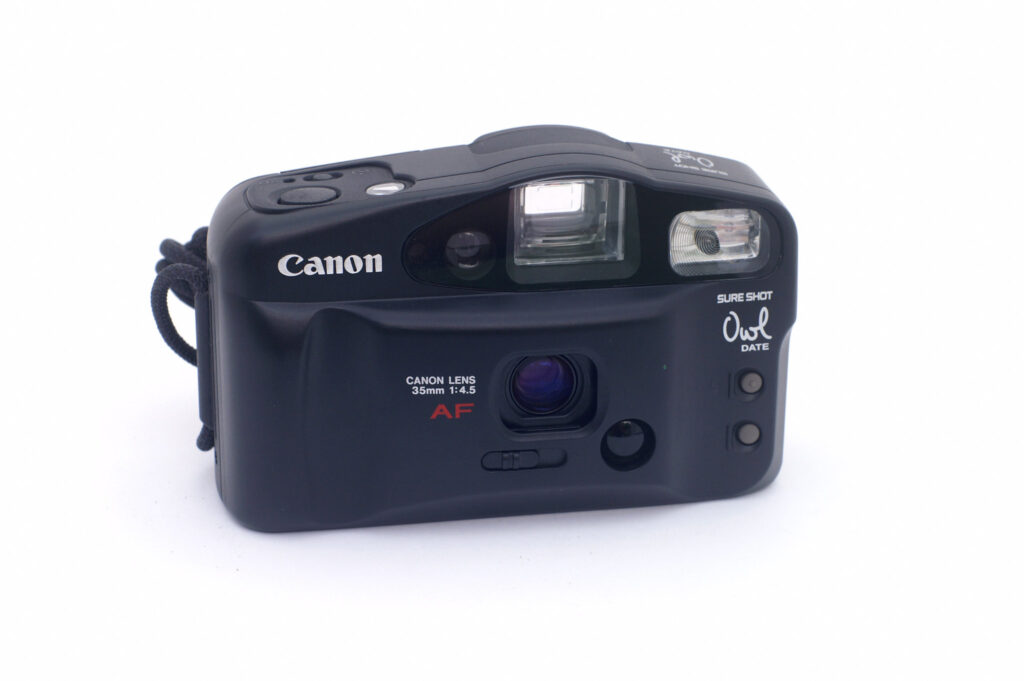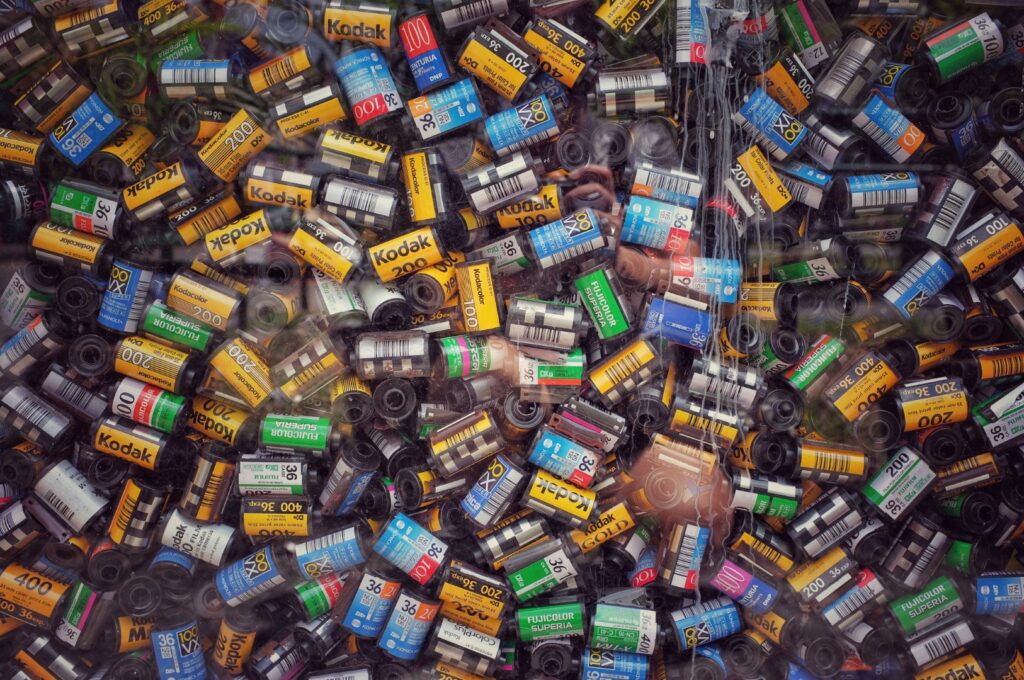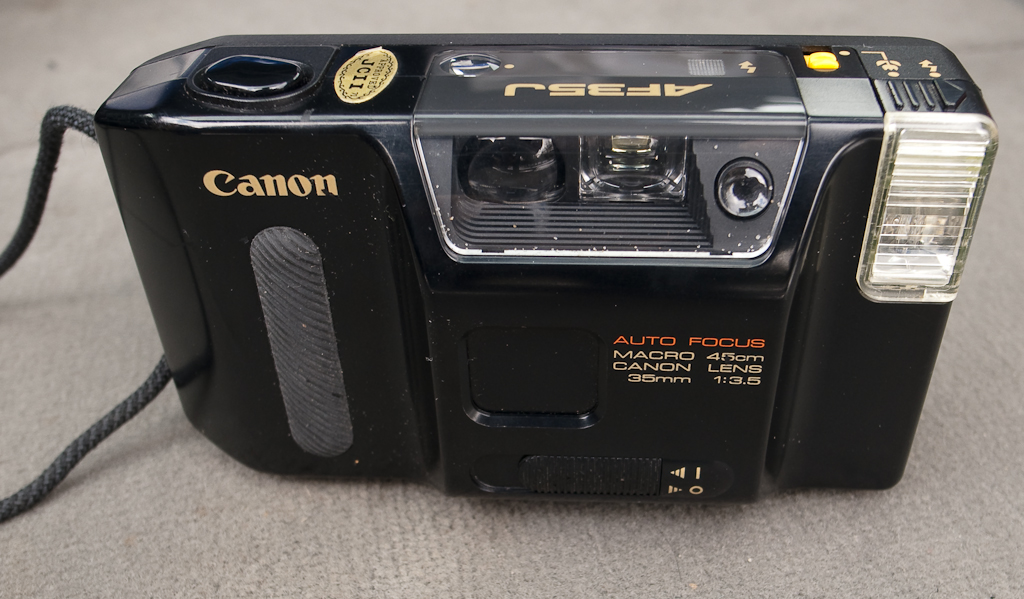In a world dominated by digital photography, there remains a nostalgic charm and allure to the art of film photography. One way to dive into the world of analog photography without breaking the bank is by exploring cheap point and shoot film cameras. These compact, easy-to-use devices allow both beginners and experienced photographers to capture memories and experiment with the unique characteristics of film.
Despite the rise of digital cameras and smartphones, film photography continues to hold a special place in the hearts of many photography enthusiasts. The unmistakable warmth, depth, and organic grain of film images offer a refreshing change from the sharp, pixel-perfect digital photos we’ve become accustomed to. As interest in analog photography is rekindled, it’s the perfect time to discover the best budget-friendly point and shoot film cameras for your creative journey.
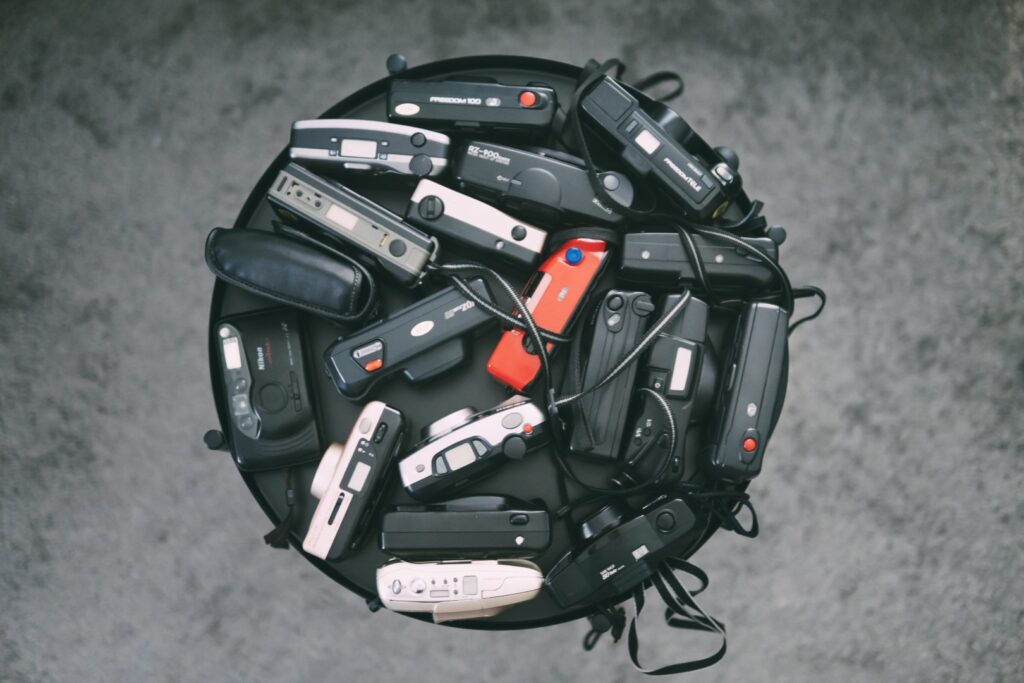
Are Point and Shoot Film Cameras Worth It?
Before delving into the world of point and shoot film cameras, it’s essential to weigh the pros and cons to determine if they’re the right choice for your photography needs.
Pros of using point and shoot film cameras
- Simplicity: Point and shoot cameras are designed for ease of use. With minimal settings to adjust, you can focus on composing your shots without getting bogged down in technical details.
- Portability: Most point and shoot cameras are compact and lightweight, making them perfect for travel and everyday use.
- Unique Aesthetic: Film photography offers a distinct look that can’t be replicated by digital cameras. The natural grain, colors, and depth of film images add an authentic, timeless quality to your photos.
- Learning Experience: Using a film camera teaches you to be more intentional with your shots, as you’re limited by the number of exposures on a roll of film. This can help you develop a better understanding of composition and lighting.
- Cost: Affordable point and shoot film cameras are widely available, allowing you to experiment with film photography without making a significant investment.
Cons of using point and shoot film cameras
- Limited Control: Point and shoot cameras typically offer fewer manual settings compared to more advanced film cameras or digital cameras, which might be a drawback for photographers who prefer greater control over their images.
- Ongoing Costs: Film and developing costs can add up over time, especially if you shoot frequently.
- Waiting for Results: Unlike digital photography, you’ll have to wait for your film to be developed before you can see the results. This can be both exciting and nerve-wracking, as you might not know if you captured the perfect shot or if there were any issues with the film.
- Scanning and Editing: If you want to share your film photos online or create digital copies, you’ll need to scan and possibly edit your images, which can be time-consuming.
Top Cheap Point and Shoot Film Cameras
Olympus Trip 35
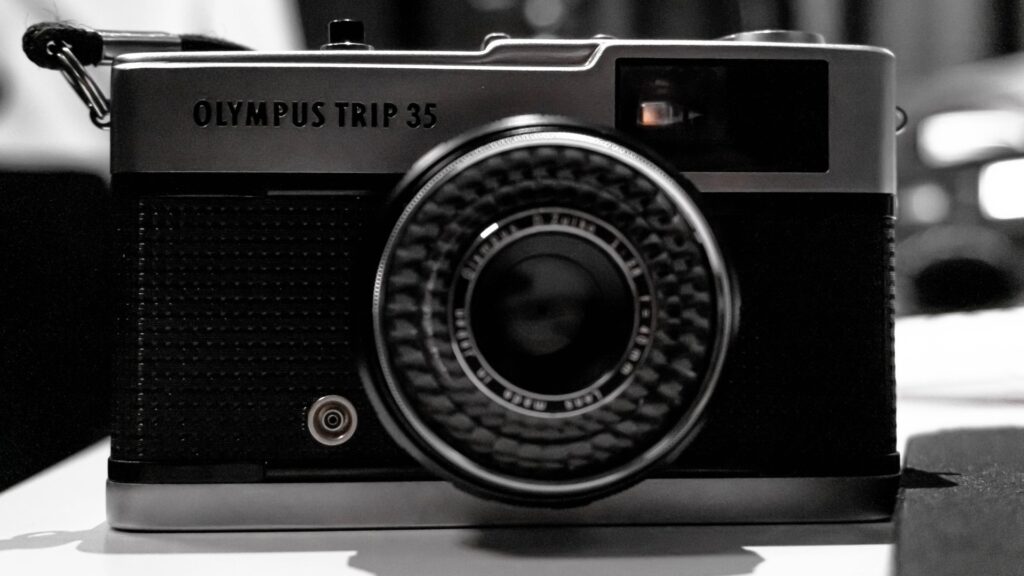
The Olympus Trip 35 is a classic point and shoot camera that first hit the market in 1967. With over 10 million units sold, this camera has gained a cult following among film photography enthusiasts for its durability, simplicity, and reliable performance.
- 40mm f/2.8 D. Zuiko lens that delivers sharp images with great color rendition
- Selenium light meter that requires no battery, making it eco-friendly and low-maintenance
- Automatic exposure control with two shutter speeds (1/200s and 1/40s) and aperture priority
- Zone focusing system with four distance settings for easy focus adjustments
- Price Range: $30 – $60
Canon Sure Shot (Autoboy) series
The Canon Sure Shot series, also known as Autoboy in Japan, offers a range of versatile and user-friendly 35mm point and shoot cameras from the 1980s and 1990s. Each model in the series is designed to cater to different photography preferences, from compact designs to models with advanced features.
- Autofocus system for sharp, in-focus images
- Built-in flash with various modes, such as red-eye reduction and night mode
- Automatic exposure control for well-exposed photos in different lighting conditions
- Wide range of models, such as the Sure Shot Supreme with a 38mm f/2.8 lens and the Sure Shot Telemax with a 38-70mm zoom lens
- Price Range: $40 – $100
Pentax Espio (IQZoom) series
The Pentax Espio series, known as IQZoom in the United States, is a line of compact 35mm point and shoot cameras introduced in the 1990s. These cameras boast a wide array of features, making them suitable for various photography situations, from casual snapshots to more advanced photography.
- Autofocus system with multiple focus points for accurate focusing
- Built-in flash with several modes, such as red-eye reduction, slow sync, and fill-in flash
- Automatic exposure control with advanced options like backlight compensation and exposure lock
- Zoom lenses ranging from wide-angle to telephoto, such as the Espio 738G with a 38-70mm zoom lens and the Espio 115G with a 38-115mm zoom lens
- Price Range: $30 – $70
Fujifilm Simple Ace 400 (disposable)
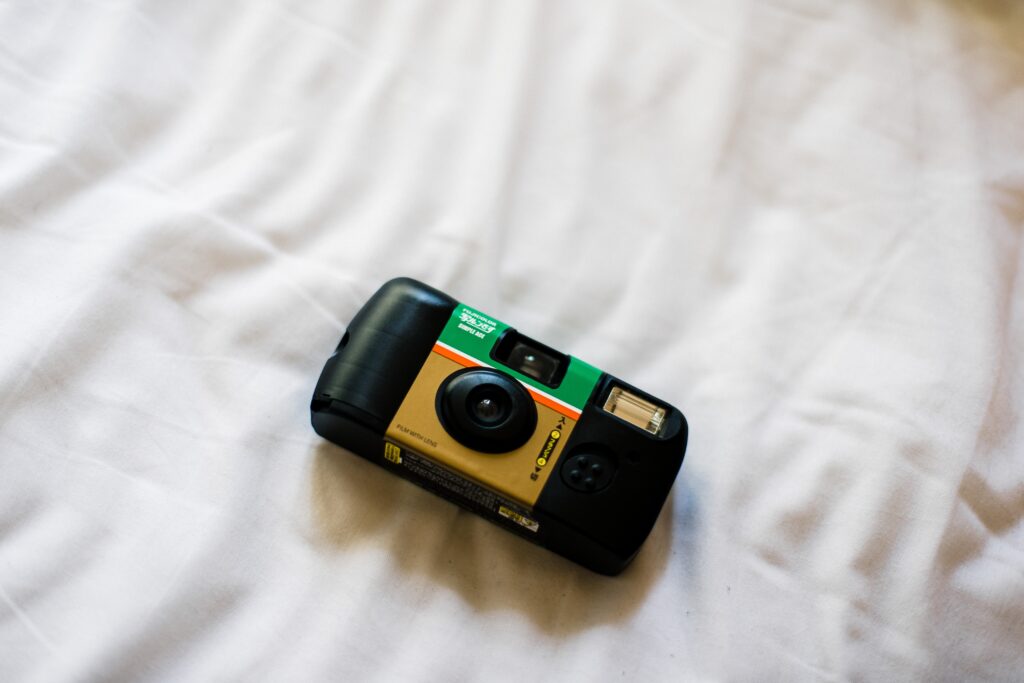
The Fujifilm Simple Ace 400 is a disposable point and shoot camera that comes pre-loaded with 400 ISO film. This camera offers a fun and affordable way to enjoy film photography without worrying about camera maintenance, making it perfect for parties, vacations, or trying out film photography for the first time.
- 27 exposures of Fujicolor Superia X-TRA 400 film for versatile shooting in various lighting conditions
- Fixed-focus 32mm f/10 lens for capturing wide-angle shots without the need for manual adjustments
- Built-in flash with a range of 1.2m to 3m for low-light photography
- Easy-to-use design with clear instructions on the camera body
- Price Range: $30 – $50
Best 90s Point and Shoot 35mm Camera: The Yashica T4 Super
The Yashica T4, also known as the T4 Super or T5 in some regions, is a highly sought-after 35mm point and shoot camera from the 1990s. Manufactured by the Japanese company Kyocera, the Yashica T series was known for its sleek design, exceptional image quality, and innovative features. Introduced in 1993, the Yashica T4 quickly gained popularity among photographers and has since become a cult classic in the world of film photography.
Features and Reasons for Its Popularity
The Yashica T4 owes its popularity to several standout features that set it apart from other point and shoot cameras of its time:
High-Quality Lens: The T4 comes equipped with a sharp and fast Carl Zeiss T* Tessar 35mm f/3.5 lens, which is renowned for its superior image quality, contrast, and color reproduction.
- Compact and Durable Design: The Yashica T4 features a sleek, compact design that is both stylish and practical. Its weather-resistant build and protective lens cover ensure that the camera is well-suited for various shooting conditions.
- Autofocus System: The T4 boasts a reliable 3-point autofocus system that allows photographers to capture sharp, in-focus images with ease. It also includes a focus lock feature for greater control over the focus point.
- Built-in Flash: The camera’s built-in flash offers various modes, such as red-eye reduction and fill-in flash, making it easy to capture well-lit images in different lighting situations.
- Waist-Level Viewfinder: One of the unique features of the Yashica T4 is its waist-level “Super Scope” viewfinder, which allows photographers to shoot from different angles and perspectives, adding a creative touch to their images.
The Yashica T4’s combination of high-quality optics, user-friendly features, and stylish design has made it a favorite among photographers and collectors alike. Although its price has risen in recent years due to its popularity, the T4 remains an iconic example of 90s point and shoot camera technology.
What is the most Affordable Way to take Film Photos on a Point-and-Shoot?
Film photography can be an expensive hobby, but there are ways to make it more budget-friendly. By being resourceful and exploring alternative options, you can save money on film, developing, and cameras.
Tips for saving money on film
- Buy in bulk: Purchasing film in larger quantities can often lead to significant savings per roll. Look for deals online or from local photography stores.
- Choose consumer-grade film: While professional-grade film can offer better results, consumer-grade film is often more affordable and still delivers quality images.
- Look for sales and discounts: Keep an eye out for promotions and discounts on film from various retailers or online stores. You can also join photography forums or social media groups to stay informed about ongoing deals.
- Think about shooting black and white film. B/W film is usually much cheaper to buy and develop. Check out our buying guide on black and white film to get a comprehensive overview.
Affordable Developing Options
- Learn to develop film at home: Developing black and white film at home can be cost-effective and rewarding. You’ll need some basic equipment and chemicals, but the long-term savings can be substantial.
- Use local labs or photography clubs: Local labs or photography clubs may offer discounts on developing services. Joining a photography club can also give you access to shared resources and expertise.
- Compare online services: Online film developing services can be more affordable than brick-and-mortar stores. Research and compare prices to find the best deal.
Using Reusable Cameras or Expired Film
- Reusable cameras: Instead of investing in an expensive point and shoot camera, consider a reusable or reloadable camera like the Lomography Simple Use Film Camera or the Harman Ilford HP5+ Reloadable Camera. These cameras come pre-loaded with film and can be reloaded once you’ve used up the initial roll, making them more affordable in the long run.
- Expired film: Expired film can often be purchased at a lower price, and while it may result in some color shifts or increased grain, these imperfections can add character to your photos. Be aware, though, that the results can be unpredictable, so it’s best to use expired film for experimental or casual photography rather than important shoots.
How to Choose a Budget Point and Shoot Camera
Selecting the right budget point and shoot camera can be a challenging task, especially with so many options available. It’s essential to consider several factors to ensure you find a camera that suits your needs and budget.
Considerations When Selecting a Camera
- Price: Determine your budget before starting your search. This will help you narrow down your options and prevent overspending. Keep in mind that you should also consider the ongoing costs of film and developing when setting your budget.
- Features: Think about the features you want in a camera, such as autofocus, built-in flash, zoom lenses, or manual controls. Remember that additional features might increase the price, so prioritize the features most important to you.
- Condition and Reliability: When purchasing a budget point and shoot camera, especially if it’s a vintage or second-hand model, pay close attention to its condition. Look for any signs of wear, damage, or potential issues. Research the specific model’s reputation for reliability and common problems, and read reviews from other users to ensure you’re making an informed decision.
- Availability of Film and Developing Options: Before committing to a camera, check the availability of compatible film and developing options in your area or online. Some cameras may use less common film formats or require special developing processes, which can be more expensive or harder to find. It’s best to choose a camera that uses readily available film formats and has accessible developing options to keep costs down and ensure you can continue shooting without difficulty.
What is the Easiest to use beginner Point and Shoot Film Camera?
Choosing the right point and shoot film camera for beginners is crucial, as it should offer a user-friendly experience while still producing quality images. One camera stands out as an excellent option for those new to film photography.
Recommended Camera for Beginners: Kodak FunSaver (disposable)
The Kodak FunSaver is a disposable point and shoot camera that is perfect for beginners due to its affordability and ease of use. As it comes pre-loaded with Kodak Gold 200 ISO film, first-time film photographers can start shooting right away without worrying about camera maintenance or settings.
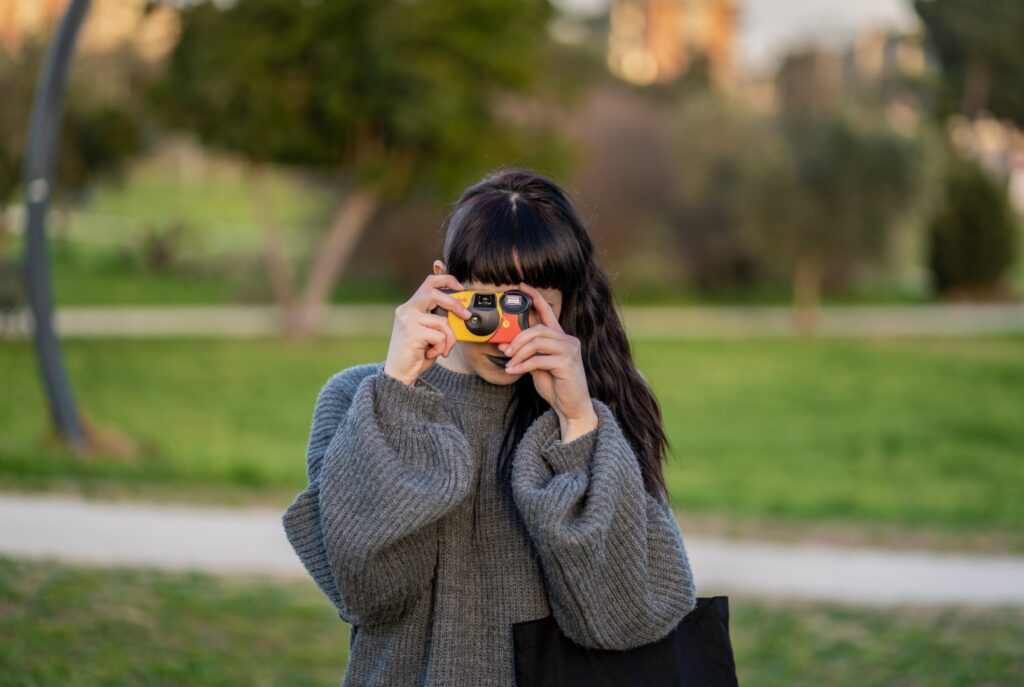
Features That Make It Easy to Use
- Fixed-focus lens: The FunSaver comes with a fixed-focus 30mm f/10 lens, eliminating the need for manual focus adjustments. This allows beginners to concentrate on composing their shots without worrying about focus.
- Built-in flash: The camera features a built-in flash with a range of 1.2m to 3.5m, making it easy to capture well-lit images in various lighting conditions. The automatic flash activation ensures that even beginners can achieve proper exposure in low-light situations.
- Pre-loaded film: The FunSaver is pre-loaded with Kodak Gold 200 film, which is versatile and suitable for different lighting conditions. This takes away the stress of choosing and loading film for those new to film photography.
- Easy-to-use design: The camera’s straightforward design includes clear instructions on the body, making it simple to operate even for those with no prior experience in film photography.
- No maintenance or settings: As a disposable camera, the FunSaver doesn’t require any maintenance or setting adjustments. This allows beginners to focus on learning the basics of composition and framing without being overwhelmed by technical details.
Conclusion
We’ve covered several affordable point and shoot film cameras, including the Olympus Trip 35, the Canon Sure Shot Series and the Pentax Espio Series. The Yashica T4 is an excellent 90s option, and the Kodak FunSaver is perfect for beginners.
Film photography offers a unique, rewarding experience with a nostalgic charm. By choosing an affordable point and shoot film camera, you can start your film photography journey without breaking the bank. So, grab a camera, load a roll of film, and start capturing the world through the timeless medium of film.

